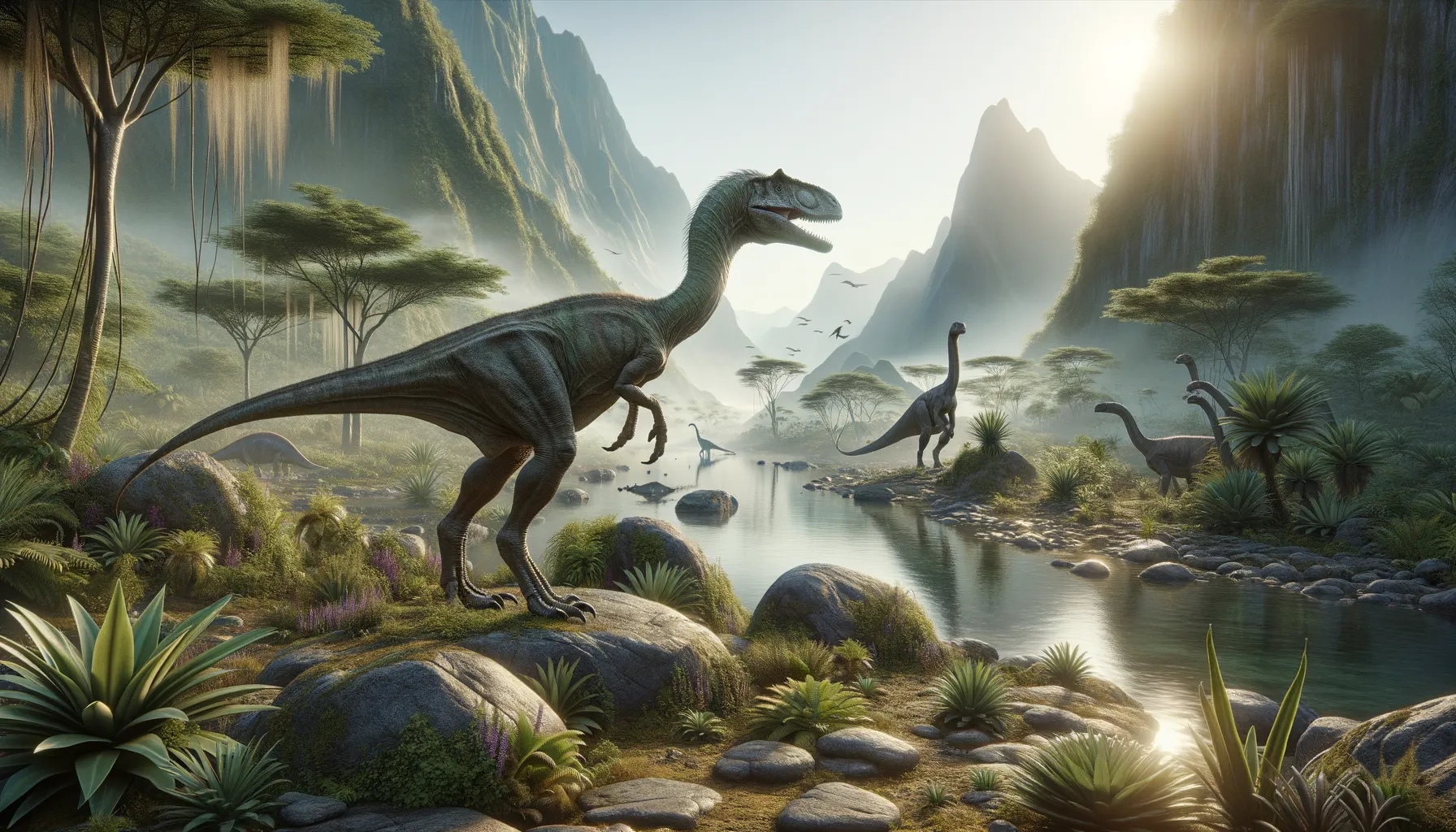
Coeluroides
Swift predator of the ancient Indian plains.
Period
Cretaceous
Length
Around 2.5 to 3 meters long.
Height
Approximately 1 meter tall at the hip.
Weight
Around 20 to 30 kilograms.
Coeluroides was a small, bipedal theropod that roamed the lands of what is now India during the late Cretaceous period. With a slender build, it is believed to share close relations with more evolved theropods. This dinosaur's fossil record is limited, making every new discovery crucial to understanding its ecology and evolution. Its fossils provide insights into the faunal compositions before the mass extinction event.
Diet
Coeluroides was likely carnivorous, preying on small animals and insects. It may have scavenged as well, depending on availability of food resources.
Hunting
It probably relied on its agility and speed to hunt smaller prey. Its sharp claws and teeth were effective for capturing and killing prey.
Environmental challenges
During the Cretaceous period, Coeluroides faced fluctuating climates and volcanic activities. The changing environments required adaptability, affecting their habitats and food sources. The competition from other predators might have influenced its hunting and scavenging habits.
Speed
Medium; capable of short, swift bursts.
Lifespan
Estimated up to 20 years.
First discovery
Discovered in the mid-20th century in India.
Fun Facts
- Coeluroides is a dinosaur that lived during the Late Cretaceous period, about 70 million years ago.
- It was a small, bird-like dinosaur, showing early features similar to modern birds.
- The name 'Coeluroides' means 'hollow form', referring to its lightweight bones.
- Fossils of Coeluroides have been primarily found in India, offering insights into the region's prehistoric ecosystem.
- This dinosaur was likely a carnivore, feeding on small insects and other creatures.
- Coeluroides is not very well-known, making each fossil discovery precious to scientists.
- Its bird-like features suggest that it might have been covered in feathers.
Growth and Development
Coeluroides likely experienced rapid growth in its early years to reach maturity. Evidence suggests it followed a typical dinosaur growth pattern with stages of accelerated growth. The species needed to grow quickly to avoid predation and compete for food resources effectively.
Habitat
It inhabited forested and open areas, able to adapt to varying terrains. Access to water sources would have been crucial for survival. Fossils suggest it lived alongside a variety of other dinosaur species, indicating a richly biodiverse environment.
Interaction with other species
Coeluroides coexisted with numerous other herbivorous and carnivorous dinosaurs. It likely faced competition and possibly aggressive encounters with larger predators. They might have formed loose groups for protection or social reasons.
Natural lifespan
Its natural lifespan is estimated at around 15 to 20 years.
Reproduction
Like many dinosaurs, Coeluroides probably laid eggs. Nesting behavior would have involved finding secure locations to guard against predators. Growth from juveniles likely involved parental care, as has been hypothesized for many theropods.
Social behaviour
Potentially, Coeluroides exhibited some level of social behavior, possibly forming small groups or pairs. Social structures could have focused on hunting efficiency or defense against predators. However, definitive evidence of social dynamics remains speculative.
Fossil locations
Fossils have been primarily found on the Indian subcontinent. This includes regions which, during the Cretaceous period, were part of a large, isolated landmass. The scattered fossil record underlines the need for more comprehensive exploration.
